CALLING ALL ANGLERS – SUNDOWNER FLY FISHING COMPETITION AT OXBOW COUNTRY ESTATE We are now well into winter – it is once again time to pack your rods and flies and get ready for the 12th Annual Sundowner Winter Fly fishing Competition at Oxbow Country Estate on the 12th July 25, with beautiful Bronkhorstpruit countryside as a backdrop.
Fly fishing for trout at night
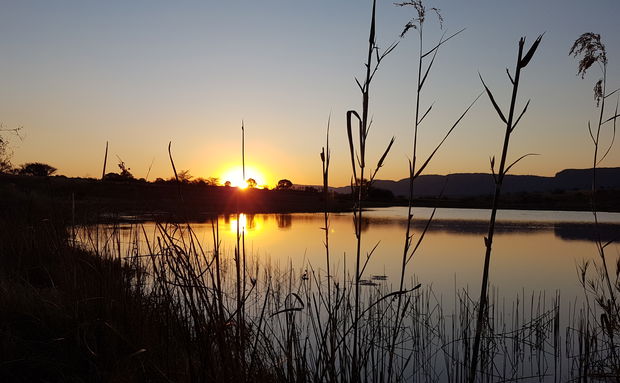
Sundowner Flyfishing Adventures will be hosting a Moonlight trout fishing experience at Oxbow Country Estate on Friday, 16th August. This blog will assist with some insight on fly fishing for trout at night.
Many fly-fisherman wonder if they can successfully fly fish at night. Can you fly fish at night bank angling? What kind of fish can you catch when you fly-fish at night?
You can fly fish at night. Most species of fish feed at night, meaning you can fish for them. It doesn't matter if you fish from the bank, a boat or while wading in a river. Brown trout in a still water or stream are especially good to catch for at night.
You will need to remember some things if you're going to attempt fly-fishing at night. With the right equipment and information, you can fly-fish at night both safely and successfully. Read on to find out how.
Many fly-fisherman wonder if they can successfully fly fish at night. Can you fly fish at night bank angling? What kind of fish can you catch when you fly-fish at night?
You can fly fish at night. Most species of fish feed at night, meaning you can fish for them. It doesn't matter if you fish from the bank, a boat or while wading in a river. Brown trout in a still water or stream are especially good to catch for at night.
You will need to remember some things if you're going to attempt fly-fishing at night. With the right equipment and information, you can fly-fish at night both safely and successfully. Read on to find out how.
Fly-Fishing At Night
If you're going to fly-fish at night, it's helpful to use bigger flies. A bigger fly can be seen more easily by the fish in the dark. Trout and other fish are not as easily spooked in the dark, so you don't need to worry about the splash caused by a giant fly.
Can I go Fly Fishing from the dam bank at Night?
When fishing from the bank, you should make sure that you are familiar with the area that you are going to fish in. Don’t make the first time you fish somewhere a night fish. At least check out the area before fishing at night. If you know the area, you can check where the access points are and spot any potential hazards. You can also find a spot where there won’t be any obstacles to hinder your casting.
What equipment do I need to fly fish at night?
If you’re heading out to fish at night, you should have the proper equipment with you.
- Fishing Headlamp - A mountaineering style headlamp is useful for nighttime fly-fishing. Look for one with a red light that is 1080 lumens and comes with rechargeable batteries. A red light is handy, as you won't accidentally dazzle anyone else when you look at them. Adjustable straps are useful, so you can adjust the lamp to be comfortable
- Glow in the Dark Fly Lines - If you're planning to go night fly fishing a lot, a fly line that glows in the dark is a worthwhile investment. These lines might seem gimmicky, but if you charge them with a bright light, they will work well. These lines are more expensive than a standard line, but they do make it much easier to track your line.
- The Fly Rod - A five-six weight fly rod is recommended by fly fishermen fishing at night, hoping to land bigger trout. You may very well hook bigger fish at night, so don’t want to trying to bring them under control with a light rod. You could also use shorter and heavier leaders for streamers, in sizes 1x or 2x. These should be between four and six feet. Most fish are less leader shy at night than they are during the day.
- Safety Glasses - All fisherman should protect their eyes in case of a rogue hook coming towards them. During the day, many fishermen just wear sunglasses to protect their eyes, but, at night, this doesn't work. Instead, a cheap pair of safety glasses is plenty to keep your eyes safe.
Should I make shorter casts fly fishing at night?
When you're trying to find fish at night, you need to cover as much water as possible—the more time your fly spends in the water, the more chance you will catch the fish. Try to keep your casts 30 feet or less so you can better focus on your accuracy.
What flies are best for night fishing?
When looking for the right flies to use for fly fishing for trout at night, you will want a few options for a variety of categories.
- Dry Fly Stimulators - If you're lucky enough to be on the dam for night fishing during a nighttime hatch, you will need imitations of mayflies. There are many patterns available but look for a reliable option, such as extended body dry fly or large-bodied dry flies with big presentations. These can also be combined with a hopper-dropper set up.
- Mouse or snake Patterns - If there are large trout or bass then a mouse fly is an option. These flies appeal to the largest trout and bass who have the most massive appetites. If you have them, fish them along the riverbank, and you can expect a big reaction. You don't need a mouse fly that is very realistic looking. A simple fly with the essential characteristics of a mouse is enough. Choose one with a furry body and a tail, and that should be enough.
- Streamers - There are lots of streamer patterns available. Pretty much all of them will work for trout at night as long as they are dressed in dark colors to create a distinct silhouette and plenty of wiggling motion. Take streamers with multi-section articulated bodies and lots of flowy materials that will pulsate in the water.
Within each of these categories of flies, there are hundreds of pattern variations on offer. The best way to find the best one is to experiment. Try a range of flies that use different materials and body profiles until you find a pattern that works well for you in the area that you like to fish. Round out your box with a few terrestrial flies, such as beetle and cricket imitation, and some topwater poppers. You can also try fluorescent flies.
Is fly fishing easier at night?
Night fishing can be more productive than fishing during the day. When you’re on the dam at night, there is often less competition. Larger fish will be feeding, and those fish will be less suspicious and less observant, as they will feel safer in the darkness. It is also much easier to get close to the fish under low light conditions.
Do Streamers or dry flies do best fly fishing at night?
Both streamers and dry flies can be used during fishing at nighttime, but streamers tend to be more successful. Streamers are usually larger and are more prominent. They make more disturbance in the water, making the fly easier to fish to notice and target.
Can trout see at night when you are fly fishing?
Trout can see at night, but they can't distinguish between different colors. Most fish see in color, but they only see in black and white in dark or dim areas. This means that while they will still be able to see food or lures that pass, they will be less able to notice artificial lights, which is good news for the angler.
Make safety your primary concern fly fishing at night!
If you're walking around the dam at night, then safety should always be your primary concern. Make sure you are taking all the necessary precautions to stay safe while enjoying your night fishing trip. Make sure you advise your guide or another fisher close-by if you are moving further away from the group. Leave your contact details with a responsible person.
Top Tips For Fly-Fishing At Night
1) When in doubt, fish streamers. The largest trout tend to be the most predatory and will do most of their feeding at night. Trout like this are looking for food like minnows, sculpins, and even smaller trout. They may also look for crawfish and mice. If you get it right, fishing streamer flies will feel more like you're casting spinning lures or topwater bass plugs. Make lots of casts and give the fly a lifelike action to attract a trout.
2) At night, predatory brown trout tend to cruise the shallows in search of their prey or feed up, holding deep as they wait for prey to swim above them. If you're fishing higher in the water column or on the surface, look for holes between deeper weed structure. If you can find water that changes from deep to shallow in quick transition, this is even better. Test the inlet and outlet of the dams.
3) Adjust for depth. The Oxbow dams are reasonable shallow so stick with floating or intermediate lines. You need to modify your rigs to get your flies to the right depth. Streamers can be tied with a weight such as beads, barbell eyes, or wraps of weighted wire when fished on a floating line.
4) Work the bank. If you're fishing on larger tailwaters and lakes, then sizeable brown trout will often stick close to the bank. They might hover near a ledge or hide under structure. If you're on foot, plan your stalk carefully as you move into a position to deliver a bank-side cast.
5) Appeal to the lateral line. Trout use their lateral lines to find their prey. When you’re working your flies on the retrieve, try to make flies seem as prey-like as you can manage. Attract the trout with tremors that will entice it to investigate. You can also give your offering more interest by tying a rattle into your fly.
6) Cast straight at the target. This applies to both your streamer and dry fly fishing at night if you spot a rise, a swirl, a tail, a thrash, or any sign of fish feeding activity, launch straight at that spot.
7) Make it a splash landing. Making a commotion when landing can be an effective way to draw attention to your fly and cause a strike to be triggered. The incoming food item arriving a splash may create some competition between trout, giving you multiple options to get a bite. Landing your fly with a splash is especially effective when fishing mouse or hoper flies, as this can replicate the commotion that a mouse makes when swimming by the trout.
8) Fish slow. On the retrieve, you should mix up your stripping pattern with plenty of fast movement, mixed with pauses of varying lengths. This is worthwhile, as strikes will come as the fly slowly sinks during this pause.
9) Pay attention to your fly-fishing host. They know the waters well and are on hand to provide advice and guidance. The host is also there to ensure that safety protocols are adhered to.
10) Remember that fish don't like cloudless nights. A cloudless night can make the fishing challenging, perhaps due to the shadows. Clear skies often mean cold nights and mists on the river, which can make the fishing quite challenging. While some say that you can catch on clear, moonlight nights, but you're most likely to do better on cloudy nights, whereas you'll draw blanks on a clear, bright night.
11) Be careful of light pollution. Many night anglers usually wear a head torch, which is very useful for wearing when doing things like tying on or checking the points of your flies. It's also helpful to navigate your way around the bank. However, if you are in or near the water, turn the light off to avoid spooking the fish. It is also more polite to other anglers who are also using the river. If you can help it, do not shine a light on the water.
12) Be polite to other anglers. Spare a thought for your fellow anglers while others are fishing around you. Don't shine a light on the water. Never intrude on another angler's space, and don't interfere with anyone else trying to fish.
13) If you hook into a tree or a bush in the dark, always turn your back before applying any force to pull it out. At night, you would usually use a heavier breaking strain tippet. This might sound like common sense, but painful injuries from not following this simple rule are surprisingly common. You could also risk breaking your fly rod if you pull at it too much.
14) Be as silent as you can, and always walk softly. Fish can be susceptible to noise and vibration, as well as to visual warnings. When you walk along the bank of the dam always tread lightly. Try and stand back from the edge, and first try casting your fly close to the edge for any fish that may be cruising in the shallows.
Top Reasons To Give Nighttime Fly Fishing A Try
If you haven't tried fly fishing at night before, you might be wondering why this is something you might want to try. If you haven't tried it before, you might be missing out.
While those who only fish during the day are fast asleep, you can be on the dam landing more and bigger fish.
Bigger fish. Nighttime can be the best time to catch both good numbers of fish and larger fish too. Some of the biggest fish may only do the majority of their feeding after dark. To put it merely, fish feel more secure in the dark and can hunt prey more easily. Larger forage that fish like to feed on, mice, and frogs, are often out and moving around more after darkness has fallen, which attracts larger fish out to hunt them. A larger, bulkier fly can help the fish to find and feel the fly, attracting much bigger bites.
Beat the heat. As the late winter days are getting warmer, the day temperature are higher, making things a bit more uncomfortable for fish and anglers alike. As the sun gets lower in the evening, air and water temperatures get cooler. The cooler temperatures bring out the forage and the predator fish that you want to catch.
Using stouter leaders. If it makes sense to do so, leader poundage can be increased once the darkness reduces visibility. You can save on the expensive fluorocarbon for daylight fishing and use the cheaper regular mono instead.
Get closer to the fish. As long as you stay quiet, you will be able to get closer to the fish when you fish in the dark. The fish can't see you as well, and you won't be casting a heavy shadow from the sun. If you have bright light with you or the moon is bright, keep an eye on where your shadow is falling. You may find that you can fish the same spots that don't deliver much during the day and have much more success after dark, as the fish can't see you hovering over them.
Fish are more accessible. After nightfall, the cooler temperatures and the reduced need for cover and shade can mean the fish will swim in shallower waters and will move away from areas that are harder to get a fly into. For a fly angler, this means that the fish will be much more accessible as they’re in more open areas or right on the edges of cover and structure where a good presentation is much easier.
Less competition. Nobody enjoys fishing in a crowd. One of the big advantages of fishing at night is that there are fewer anglers around. There's less competition for prime spots so that you can fish in peace.
Less wind. On August days there can sometimes be a modest to strong wind. Many places that are often windy tend to calm down at night. If the wind drops, it makes casting a fly much more manageable. Some wind can be a good thing to anglers, but too much is always bad.
Topwater fishing. As the forage and predator fish are usually more active and in shallower water at night, the night can be an ideal time to throw out a topwater fly. Whether you are dead-drifting foam beetles to attract small rainbow trout or throwing poppers and mouse patterns for bass and brown trout, this style of fishing can be very exciting and productive.
If you are planning to try nighttime fly fishing, you could find that the rewards are well worth the potential risks and challenges. Fly fishing at night can lead to a bigger, more satisfying catch. If you are going to do it, make sure you are safe. Take all the needed precautions.
Do your research first, so you are aware of any potential risks in the area that you are fishing in and can take appropriate steps to minimize the chances of accidents when fishing in the dark. Remember that you still need to fish with care and good manners towards your fellow angler even at night, so you can all enjoy the river and the sport of fly fishing without getting in each other's way.
Credit for details included in this blob:
https://drifthook.com/blogs/discover/how-do-you-fly-fish-at-night-tips-to-get-you-started
Further Reading
Sundowner Flyfishing Adventures were nominated for the 702 small business awards in 2017 and were proud to be awarded a position as a finalist.

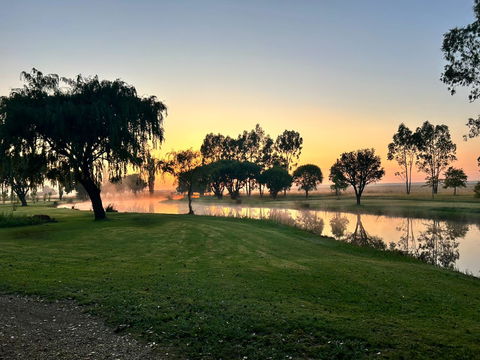
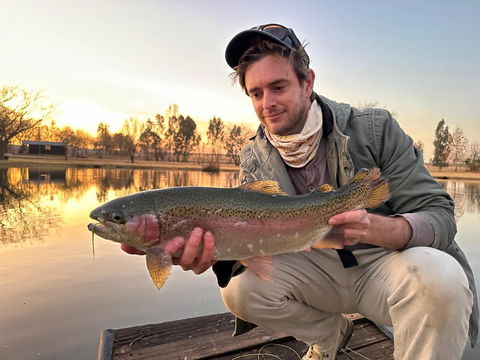

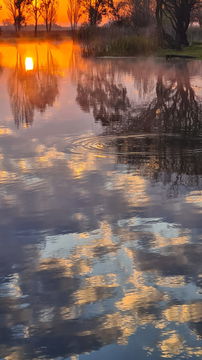




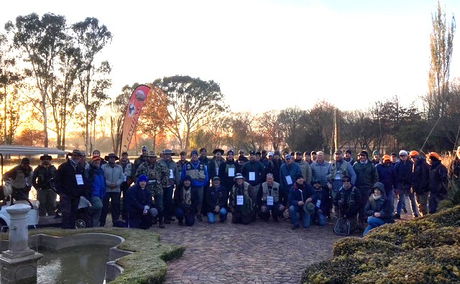

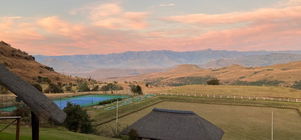

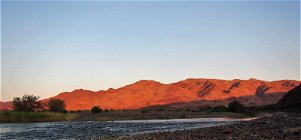
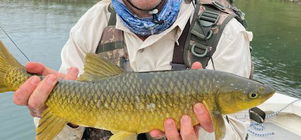

Share This Post